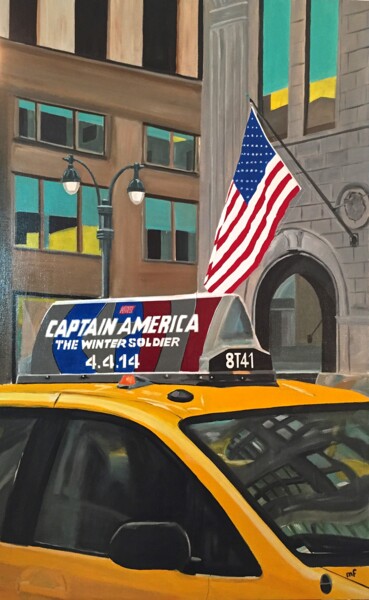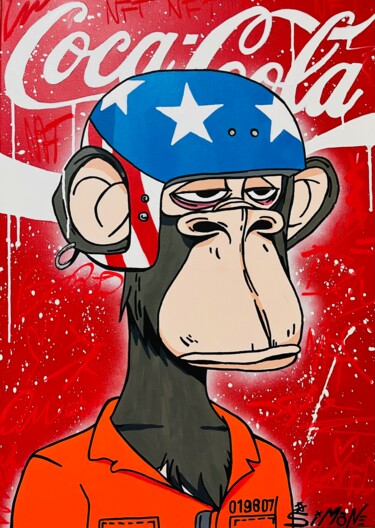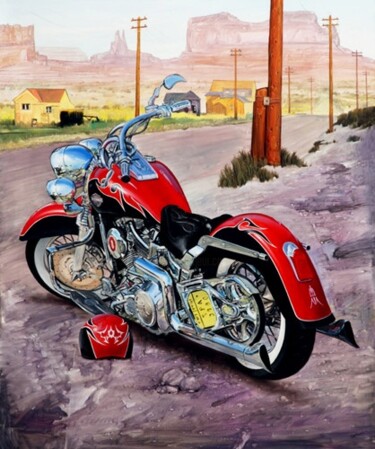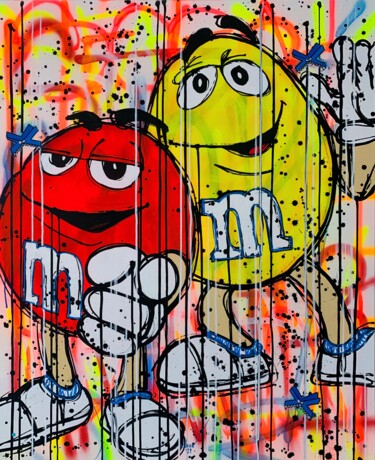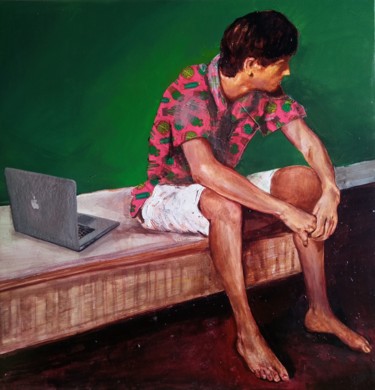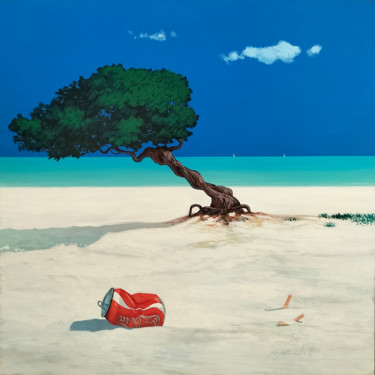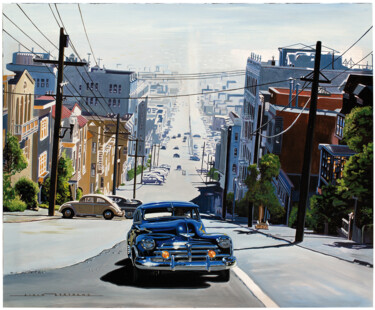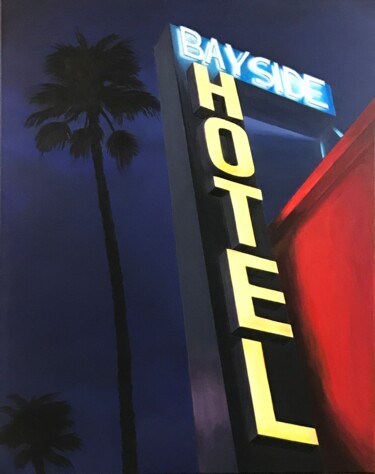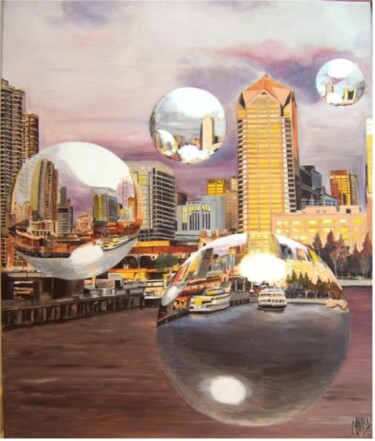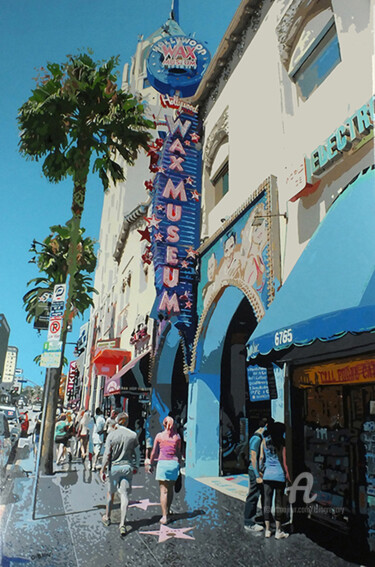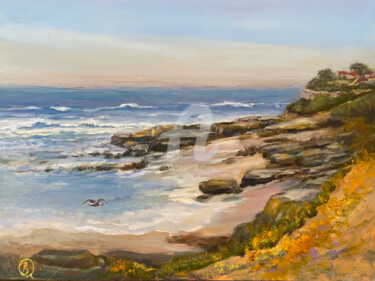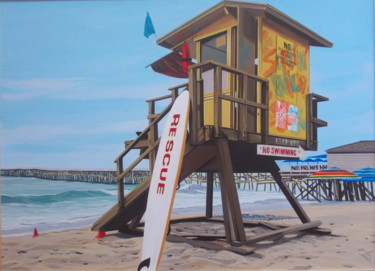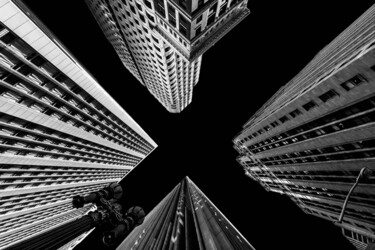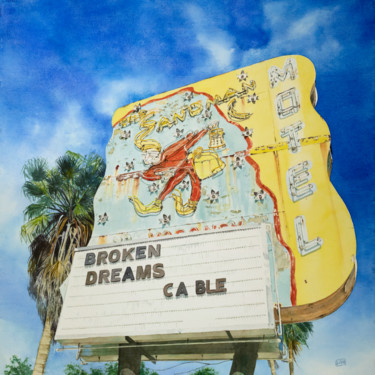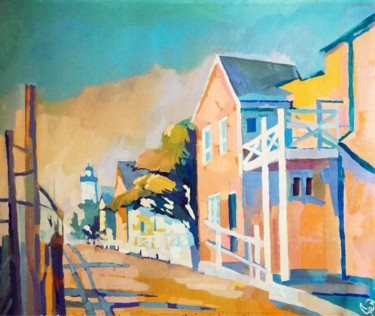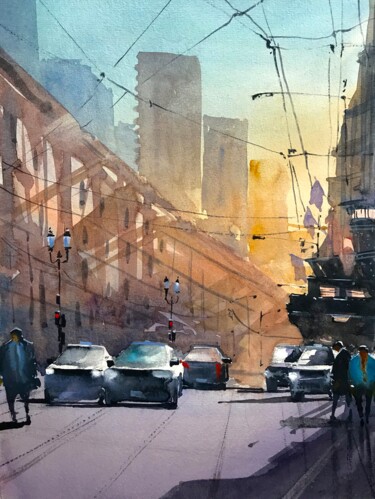 Benoît Dutour, Teasing Marilyn Monroe - Warhol, 1995. Acrylic on wood, 90 x 70 cm.
Benoît Dutour, Teasing Marilyn Monroe - Warhol, 1995. Acrylic on wood, 90 x 70 cm.
A brief excursus on the history of American art
America, with its artists, masterpieces and movements, has indelibly marked the history of Western art, imposing itself as a driving force behind tastes and trends. But has it always been so? To this question we can safely say no, because it is only since the nineteenth century that American art has found its own identity, which, definitively detaching itself from the European tradition, has allowed it to transform from "follower" into "influencer". What has been said can be illustrated through a brief excursus on the history of American art, ranging from its indigenous origins to the more recent globalization of contemporary art.
 Denis Kujundzic, Dedication Pollock, 1996. Painting, Oil on MDF Panel, 100 x 122 cm.
Denis Kujundzic, Dedication Pollock, 1996. Painting, Oil on MDF Panel, 100 x 122 cm.
 Time Machine, Dillon boy - nude Wonder Woman vs Roy Lichtenstein (blue), 2021. Etchings and prints, lithography / acrylic / spray paint / pencil / embossing on paper. 60 x 45 cm.
Time Machine, Dillon boy - nude Wonder Woman vs Roy Lichtenstein (blue), 2021. Etchings and prints, lithography / acrylic / spray paint / pencil / embossing on paper. 60 x 45 cm.
The origins of the figurative culture of the United States are to be found in the work of the native peoples, who, before the European colonization, expressed themselves through various media and styles, in order to make ritual and utilitarian objects, with the purpose of reflecting the beliefs and the natural environment. Following the arrival of settlers, this production underwent a process of hybridization, as it was enriched with new materials, techniques, and sometimes styles, derived from European art. In spite of the undeniable richness of the native culture, the first recognized American artistic movement was the Hudson River Scholl, the result of the experiments carried out by the colonists, inspired by the European trends of Romanticism and Naturalism. Later, and more precisely from 1850 to 1875, the figurative culture of the United States was pervaded by the style of Luminism, characterized by the production of landscapes that, referring to the Dutch tradition, exalted particular lights and atmospheres, in order to enhance the natural beauty. Also important in the field of landscapes was the research of the Tonalists (1870-1915) and, especially, that of American Impressionism (1880-1920), derived from the work of the major French masters. This was followed by the tendencies of the Ashcan School (1900-1915), a style that formed the basis of the later Social Realism, Synchronism (1912-1924), an abstractionism that employed mainly the color scale to create a visual "symphony," and the Harlem Renaissance (1920-1940), a movement that emphasized the new sense of African-American dignity. Between the twenties and fifties, however, came into vogue the School of Fourteenth Street, American Regionalism and Social Realism. As for the second style, it is well exemplified by the realistic rendering of everyday life by Grant Wood, while, with regard to the third, it is important to refer to the work of Max Weber, marked by the desire to consider art as a weapon to combat the capitalist exploitation of the working class. Moreover, it is precisely these latter currents that appear more independent of the prevailing European influence, as American artists began to focus more on the reality of the United States. Moreover, after the Second World War, and in particular with Abstract Expressionism (1943-1965), American influence moved abroad for the first time. This event was repeated with the subsequent currents of Minimalism (1960) and Pop Art (1950-1970), after which, with the strong international connections, it became more difficult to point to a specific American artistic trend, although we can still trace the influence of this country within the global art sphere.
 Stan, Basquiat by Stan, 2021. Painting, acrylic / marker on canvas, 100 x 100 cm.
Stan, Basquiat by Stan, 2021. Painting, acrylic / marker on canvas, 100 x 100 cm.
Masterpieces of American art: new, original and unprecedented points of view
Some masterpieces of the history of American art have indelibly marked our visual culture, imposing themselves definitively in our imagination, so much so as to become essential points of reference for our aesthetic, technical and stylistic conception. This is not only true for the users, but also for the artists, who, all too often, have been inspired by the American production, even going so far as to create real remakes of its most famous works. This way of working is also proposed within the investigation of the artists of Artmajeur who, like Galerie Teejo, Dent-De-Lion Du Midi and Tam Nightingale, have re-proposed, in an innovative way, the iconic masterpieces of Grant Wood, David Hockney and Edward Hopper.
 Galerie Teejo, The fair, 2020. Digital painting on canvas, 80 x 60 cm.
Galerie Teejo, The fair, 2020. Digital painting on canvas, 80 x 60 cm.
Galerie Teejo: The fair
Artmajeur artist Galerie Teejo's digital painting represents an innovative and ironic reinterpretation of Grant Wood's famous painting entitled American Gothic (1930). Speaking of the latter masterpiece, it is the result of a compositional choice aimed at immortalizing the domestic life and moral values of middle-class rural Midwestern America. In fact, on a background that depicts a house painted white, in Carpenter Gothic style, are depicted the artist's sister and dentist, while wearing clothes closely related to the Puritan tradition. This realistic interpretation was initially taken as a parody, which, comic and grotesque, wanted to make fun of the strong closure of the society of the time. In this regard, it should be noted that today the aforementioned satirical effect has almost disappeared, as the work is universally recognized as a masterpiece, also capable of providing a valuable historical testimony. In this context, the amusing digital work of the artist from Artmajeur seems to recall the ancient irony of American Gothic, adapting it to a modern humor, aimed at making Grant Wood's masterpiece immortal.
 Dent-De-Lion Du Midi, Closed | Hopper | Reimage art, 2021. Painting, Digital painting / Digital print on paper, 69x127 cm.
Dent-De-Lion Du Midi, Closed | Hopper | Reimage art, 2021. Painting, Digital painting / Digital print on paper, 69x127 cm.
Dent-De-Lion Du Midi: Closed | Hopper | Reimage art
Another work that allows us to know the highest artistic tradition in a different way, parallel, with a greater irony and lightness, is the surreal remake of Nighthawks by Edward Hopper, by the artist of Artmajeur, Dent-De-Lion Du Midi. In the American masterpiece, belonging to the current of Realism, we can see the clear intent of wanting to capture the daily life of ordinary people, sucked into the big cities of the United States. In fact, we find ourselves in front of the window of a restaurant that, inspired by a local Greenwich Village (New York), is immersed in the late night, in a deserted street. Inside the restaurant we can make out four figures: the bartender and three customers who, probably driven by insomnia, are inclined to spend the night out. This snapshot conveys a strong sensation of loneliness, of incommunicability, which characterizes the paradox of large cities full of people. In this context, the observer, who merely looks at the scene, perceives a certain sense of exclusion, since he is forced to witness this scene only from the outside. In the work of the Artist of Artmajeur, on the other hand, the sense of solitude and incommunicability is almost censored, through a clever removal of the characters, which allow the viewer to reinterpret the masterpiece with irony, imagining, perhaps, the protagonists fleeing from the picture.
 Rinalds Vanadzins, Last indian Ishi, 2020. Paint, acrylic/spray can on canvas, 100 x 100.
Rinalds Vanadzins, Last indian Ishi, 2020. Paint, acrylic/spray can on canvas, 100 x 100.
Rinalds Vanadzins: Last indian Ishi
The painting by Artmajeur's artist, Rinalds Vanadzins, shows similarities, both chromatic and thematic, with Andy Warhol's famous print of Sitting Bull. The masterpiece of the American master, part of the Cowboys and Indians series, aimed at immortalizing a western phase of the history of the United States, challenges and exposes the controversies surrounding the American perception of Indians. Similarly, this "critical" purpose is echoed, albeit more intensely, by the Artmajeur artist's painting of the Ishi Indian, the last known member of the Yahi people, who were killed in the California genocide in the 19th century.

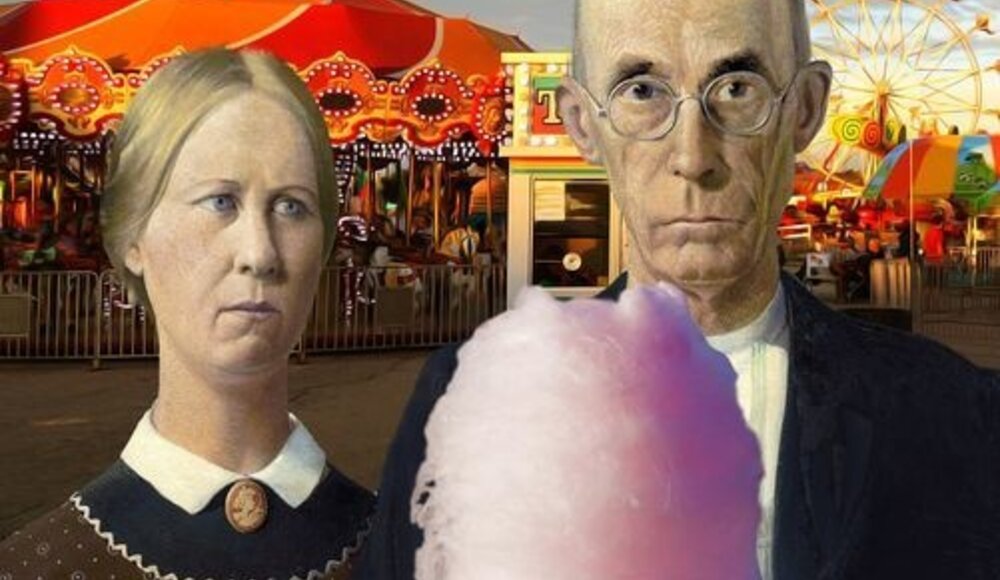
 Olimpia Gaia Martinelli
Olimpia Gaia Martinelli




